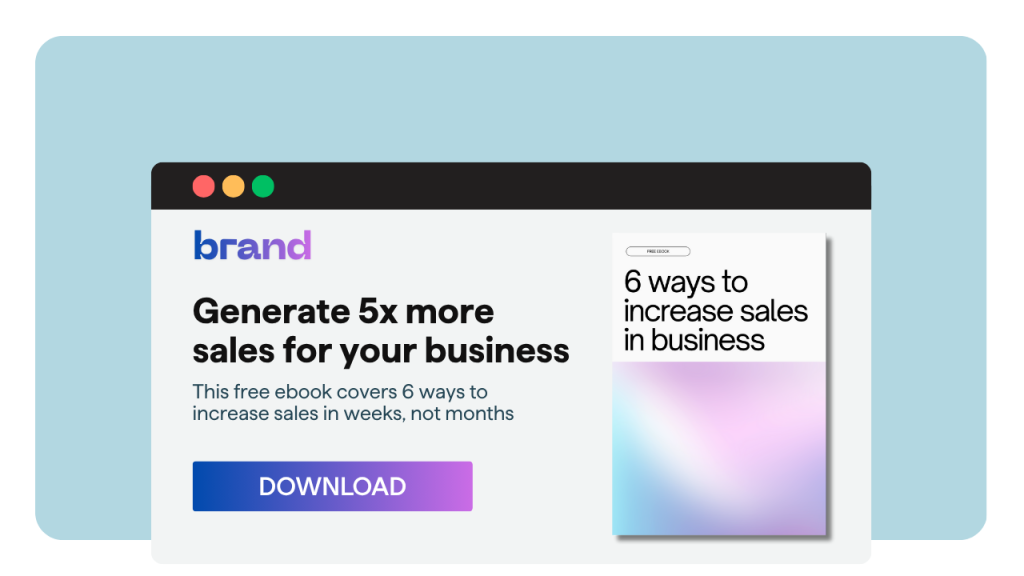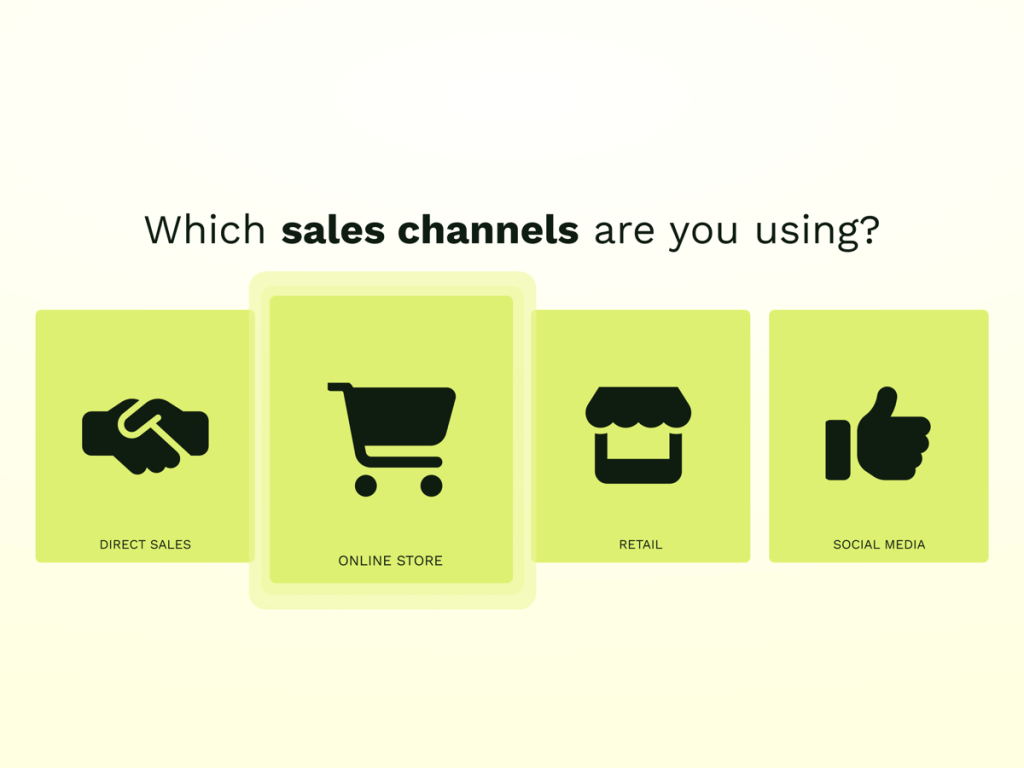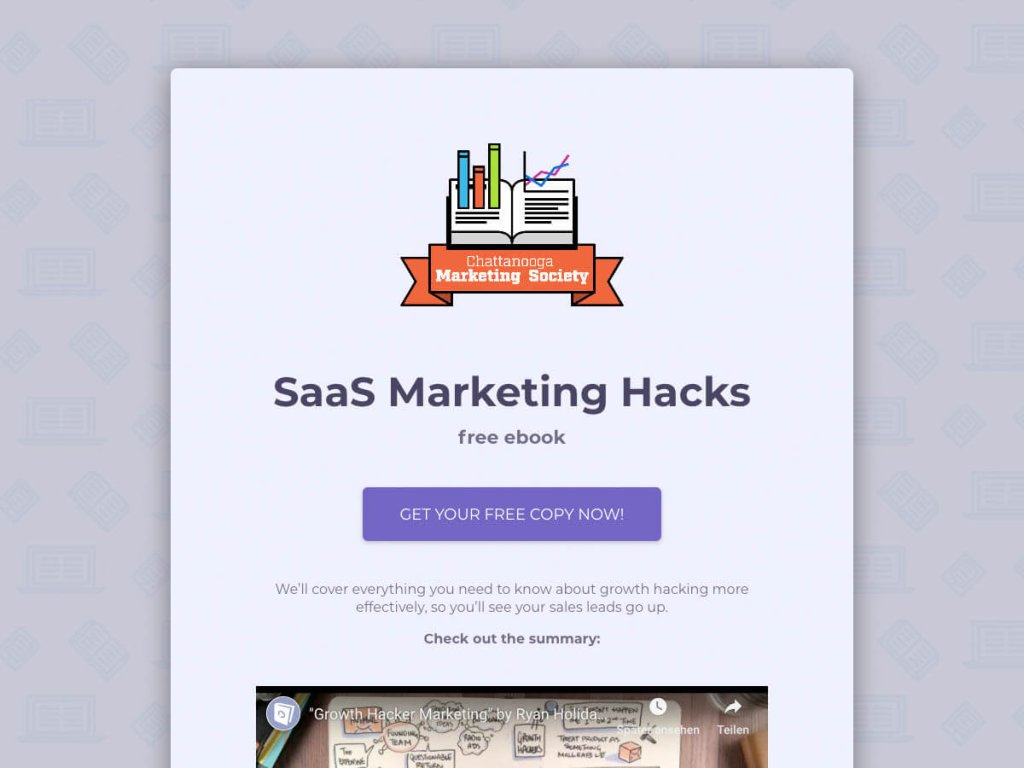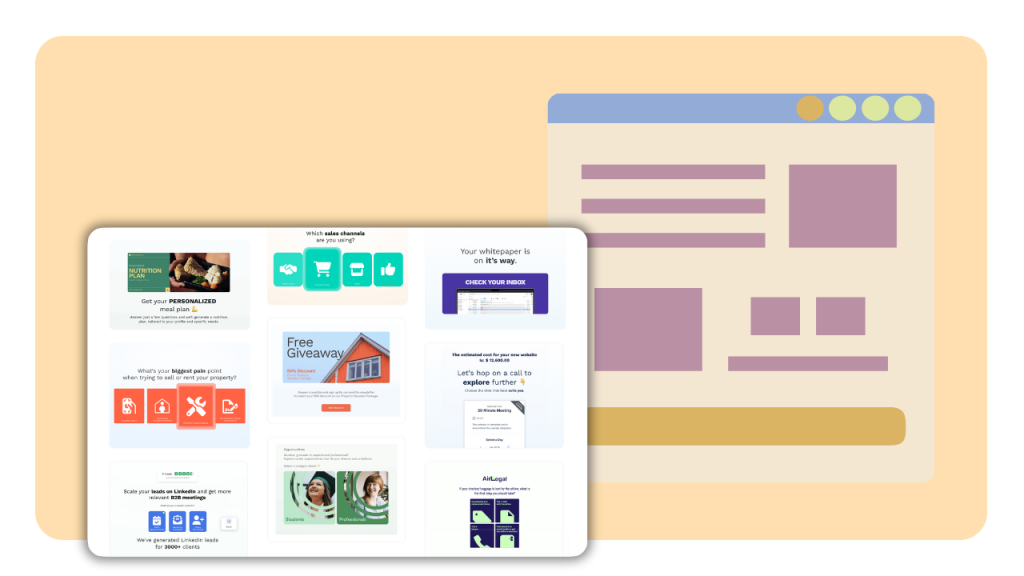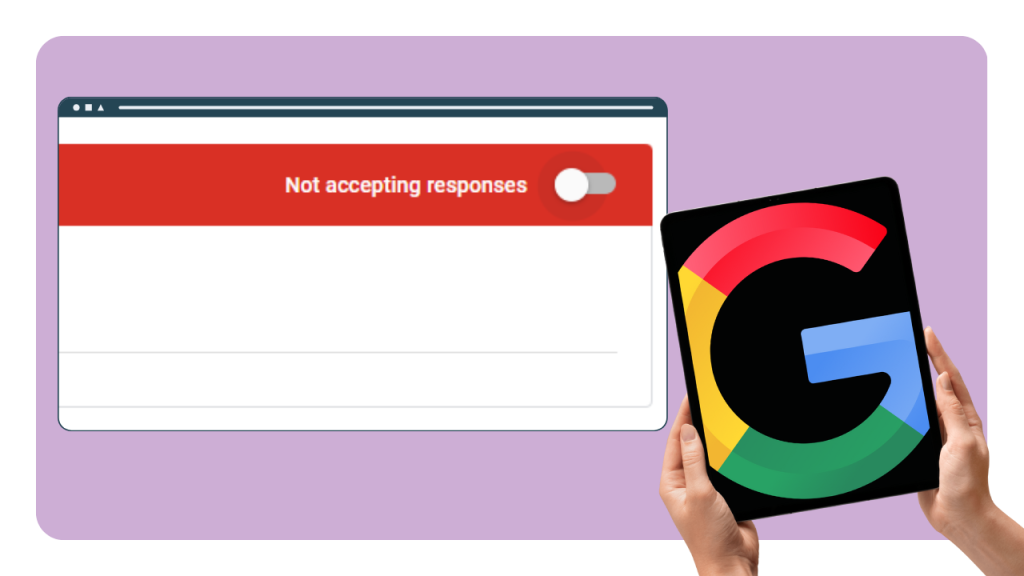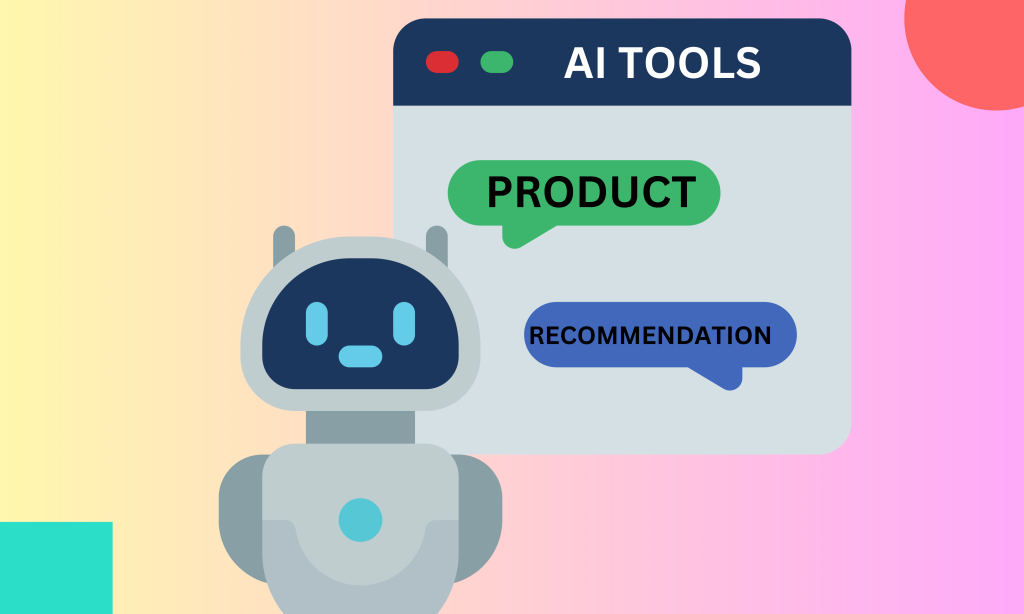You can spend weeks crafting the perfect eBook, only to watch downloads crawl in at a snail’s pace.
And here’s the thing, it’s usually not your content that’s the problem.
It’s your landing page.
If your page doesn’t make it effortless, or exciting for someone to hit “download,” you’ll lose them. Fast.
The upside? A few smart, data-backed tweaks can turn your eBook landing page into a steady lead magnet.
Here’s what we’ll cover:
What an eBook landing page actually is (and why it matters)
The key ingredients behind consistently high conversions
A simple, step-by-step process to build an eBook landing page.
Real examples from recognizable brands
Let’s talk numbers:
The average landing page conversion rate across industries sits around 2.35%, while top performers reach over 11%. [1][2]
What Is an EBook Landing Page?
An eBook landing page is a single, purpose-built page with one job: get the download for a free lead magnet or sell the paid eBook.
Not a blog post. Not a homepage. No rabbit holes.
Fewer choices, less cognitive load, more people taking the one action you want.
Why It Matters
Lead generation engine:
eBooks live at the top and middle of the funnel, building authority and filling your list so you can nurture on autopilot. Email still pulls weight, returning about $36 for every $1. Translation: every new subscriber can pay back far beyond that first download. [3]
Channel multiplier:
When your landing page converts better, every click gets more valuable. SEO, ads, social, partnerships, you name it.
Core Elements of a High-Converting EBook Landing Page
These are the essentials you’ll see on pages that consistently perform. Each one reduces friction or boosts motivation.
1) A Benefit-driven Headline (with a Clarifying Subhead)
Lead with the outcome, not just the title.
Weak: “The 2025 SEO Playbook.”
Strong: “Steal the 90-day SEO system that doubled organic demos.”
Use the subhead to answer three things: who it’s for, what’s inside, why now.
Keep it concrete, think numbers, timeframes, frameworks.
2) A Hero Visual That Makes the Value Tangible
Show the cover plus 2–3 interior pages so it feels real.
Add a short caption that teases the most valuable framework or template.
3) A Crisp Value Proposition (bullets, Not Paragraphs)
Use 3–5 bullets to translate features → benefits. Tie every point to a pain or a win.
“Stop guessing keywords.”
“Ship a 4-week content calendar in an hour.”
Short. Specific. Outcome-focused.
4) Social Proof and Credibility Cues
Reader testimonials, e.g., “This workbook cut our onboarding time by 40%.”
Logos from teams using your frameworks.
Author credentials, results, or press mentions.
Trust isn’t fluff. Research from Nielsen Norman Group highlights design quality and clear disclosure as credibility drivers. Baymard Institute shows that visible trust seals near conversion points raise perceived safety. [4][5] People decide with gut feel as much as technical detail.
5) A Short Form and a Clear, High-contrast CTA
Every extra field adds friction. Large-scale data shows a negative relationship between form length and conversion, fewer fields win. [6]
Practical moves:
For free downloads, ask for email only (first name optional).
Use action copy: “Get the eBook,” “Send My Copy,” “Start Reading.”
Make the button high contrast and obvious.
6) Microcopy That Removes Anxiety
Tiny lines near the form or button calm last-minute doubts:
“No spam. Unsubscribe anytime.”
“Instant download, plus an email copy for later.”
Clear microcopy reduces friction and improves completion rates. Small words, outsized impact. [9]
7) Focused Layout (no Competing Links)
Ditch the nav. Keep attention on the conversion.
If you need more detail, use a FAQ accordion below the fold to handle objections: “Do I need prior knowledge?” “Is this truly free?”
8) Performance and Mobile Polish
Speed. When load time slips from 1s to 3s, bounce probability jumps 32%, and 53%+ of users abandon pages taking 3+ seconds. Keep it under three seconds. [7]
Responsive UX. Legible font sizes, comfortable spacing, and easy-tap buttons correlate with higher conversions.
Analytics and testing. Plan A/B tests for headlines, hero images, and CTAs. According to VWO, companies that run A/B tests regularly see an average conversion rate improvement of 49% compared to those that don’t test at all. [8]
Think of the page like a great store greeter.
Clear promise at the door, quick path to the counter, a friendly nudge to buy, and no distractions.
Do that, and your “meh” download rate starts looking a lot more like momentum.
Step-by-Step: Build an EBook Landing Page in Minutes
You can spin up a polished, conversion-ready page in minutes with involve.me. Two quick paths:
AI Agent. Generates a starter layout, suggested copy blocks, and basic flows.
Pre-built templates. Pick a proven structure, then customize.
Step 1: Define Your Goal and Reader
Be specific. Is this page for lead capture (free), direct sales (paid), or hybrid (free sample plus upsell)?
Write down two things:
The painful problem your eBook solves.
The transformation it promises.
Clarity now saves edits later.
Step 2: Pick Your Creation Mode (AI or Template)
Open the builder and choose your path.
Use AI Agent:
Describe your eBook, audience, tone, and offer. The AI landing page drafts a page with the key sections you need: hero, benefits, testimonials, form. You tweak. It learns.
Select a template:
Choose an eBook or lead magnet template.
Create your own landing page
Using One Of Our 300+ Templates
B2B Product Finder Template
B2B Lead Magnet Template
Download E-Book Template
Step 3: Customize the Structure and Copy
Hero.
Upload your cover and 2–3 interior page previews. Add a benefit driven headline and a subhead that names your audience.
Bullets.
Translate features to outcomes. Make each line solve a pain or deliver a win.
“Stop guessing keywords.”
“Ship a 4-week content calendar in an hour.”
Social proof:
Add 1–3 testimonials plus a short author credibility block. If you have logos or press mentions, stack them here.
FAQ:
Preempt objections: time to read, prerequisite knowledge, usage rights, formats, updates. Keep answers crisp.
Step 4: Add the Form, Delivery, and Automation
Form:
Keep it short. Email plus first name if you must. Fewer fields. Fewer drop-offs.
Delivery.
Set instant download on submit and send the PDF via email so readers can revisit later.
CRM and email.
Connect HubSpot, Mailchimp, and friends. Tag contacts for the right nurture sequence.
Fire a thank-you via email or SMS or WhatsApp.
Notify your team in real time.
Pass lead data to your CRM automatically for scoring and follow-up.
Because anytime someone loves your content, chances are they will:
read more from you
click your next offer
become a customer faster
Step 5: Preview and Publish
Check headlines, spacing, tap targets, and load speed. Fix anything fuzzy and publish your landing page.
EBook Landing Page Examples (What to Borrow)
We’re highlighting patterns to emulate; layouts evolve, so focus on principles rather than pixel-perfect imitation.
1) HubSpot “Master AI Agents in 2025”
What works:
A strong, future focused headline that instantly positions the eBook as both educational and strategic. The subheading promises practical, actionable guidance from HubSpot’s senior marketing leaders, lending immediate authority and credibility.
The concise supporting copy cuts through hype and clearly explains what the reader will gain (efficiency, workflows, and insider strategies). The right-aligned visuals featuring the eBook cover and its “Playbook for 2025 Success” tagline, make the content feel premium and tangible. A bold, orange “Download Now” CTA stands out against the dark background, guiding focus and encouraging clicks.
Borrow this:
Use a data-driven, forward-looking headline that taps into trending topics (like AI), pair it with trusted authorship (CMO, VP-level), and balance clean visual hierarchy with a high-contrast CTA. This combo instantly builds both relevance and trust.
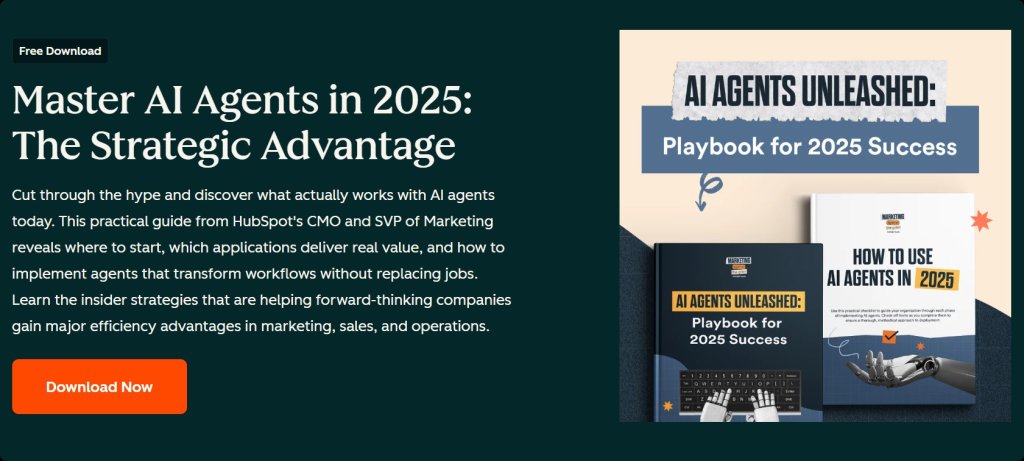
2) Salesforce “Your Complete CRM Handbook”
What works:
A clear, authoritative headline instantly positions this guide as the go-to resource for businesses exploring or implementing a CRM system. The subheading “How to make a success of your first steps with a CRM?” asks a direct question that aligns perfectly with user intent.
The copy beneath it educates without overwhelming: it outlines CRM benefits (centralized data, relationship management, ROI improvement) in accessible, reader-friendly language.
On the right, the form layout is intuitive and professional, using white space effectively to create trust. The concise checklist of what the reader will learn (“Signs your business needs a CRM,” “How CRM can improve sales”) sets clear expectations, while the blue ‘Download Now’ CTA adds a confident, branded finishing touch.
Borrow this:
Use a question-based subheadline to connect instantly with readers’ pain points, pair it with a trustworthy tone and logical flow, and reinforce with a clear value preview (bullet list). The balanced mix of informative copy and clean form design makes it feel professional, practical, and low-friction, perfect for B2B audiences.
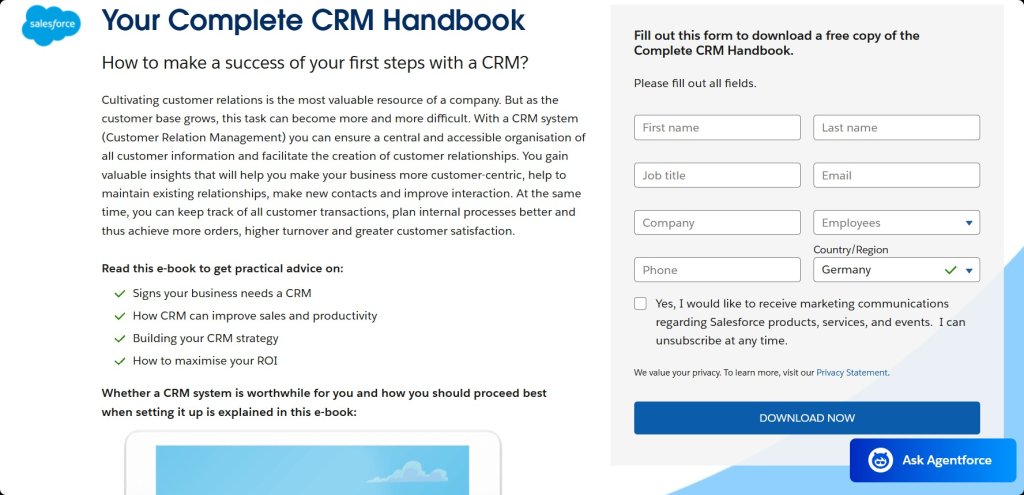
3) Microsoft “Windows 365 E-Book: The Only Constant is Change”
What works:
This page captures the hybrid-work narrative perfectly, timely, relevant, and tied to a clear value proposition. The headline connects to a universal truth (“change”) while linking it directly to the product’s positioning. The supporting copy is concise yet empathetic, acknowledging the challenges IT departments face and immediately offering a solution.
The three-point bullet list highlights tangible benefits (flexibility, security, management simplicity) without jargon. The right-hand form balances detail with minimal friction, collecting essential data points for lead qualification. The tone is calm, informative, and confident, aligning with Microsoft’s enterprise-ready brand voice.
Borrow this:
Use a theme-driven headline that speaks to transformation (“change,” “future,” “next”) and back it up with actionable takeaways in a short bullet list. Pair this with a clean, minimal form and neutral color palette to keep attention on the message, it’s a masterclass in clarity and authority.
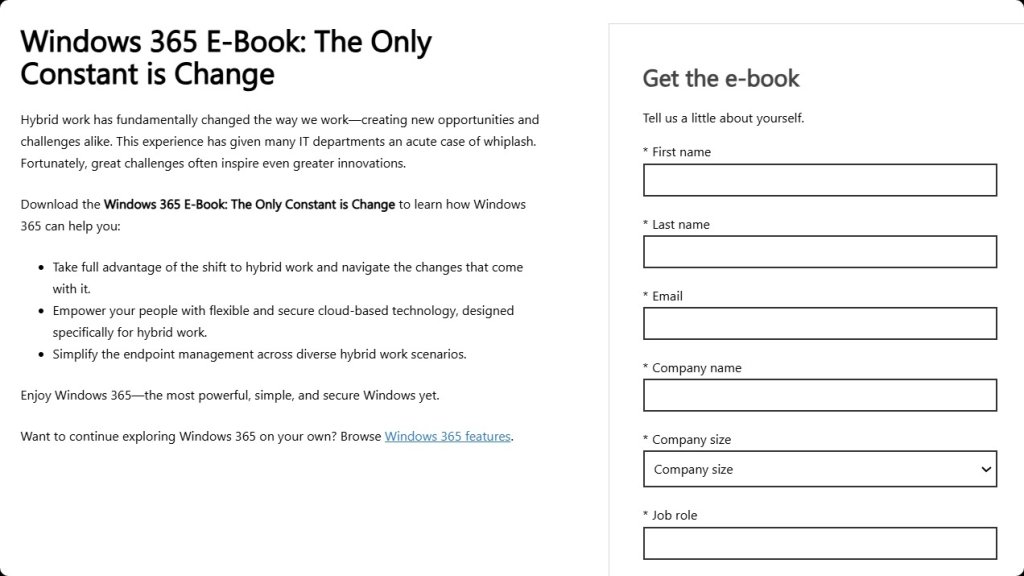
Checklist: Your EBook Landing Page in 10 Minutes
Outcome driven headline + clarifying subhead
Cover mockup + 2–3 interior page previews
3–5 benefit bullets (outcomes, not features)
1–3 testimonials or proof logos
Short form (email + first name) and high-contrast CTA
Reassuring microcopy (privacy, instant delivery)
FAQ for objections
Speed optimized (compressed images; few scripts)
Mobile-first layout and analytics installed
A/B test running (headline or CTA)
Final Words (and a Simple Next Step)
Most eBook campaigns don’t fail for lack of ideas, they fail because the landing page asks too much, says too little, or loads too slowly. Start with the essentials above, keep it focused, and iterate with small tests.
When you’re ready to move fast (without hiring a developer), involve.me gives you everything in one place: AI assisted creation, templates, multi-step funnels, workflows, email/SMS delivery, payments (for paid eBooks), CRM, analytics, and deep integrations.
Build your high-converting eBook landing page today, no code required.
Create a landing page in minutes
No coding, no hassle, just better conversions.

